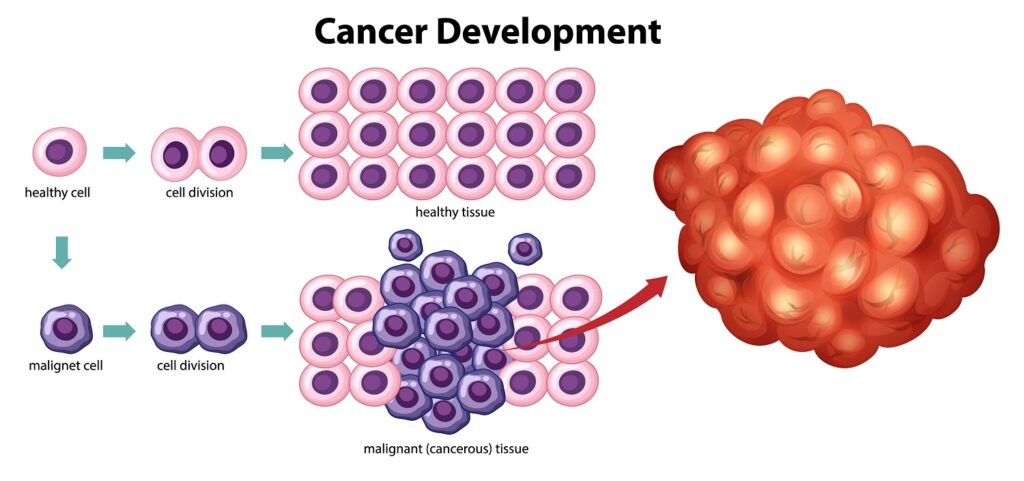
Noticing an unusual lump or swelling in your body can be concerning. It may be due to simple tissue enlargement, a cyst, or a more serious condition like a tumor. While not all enlargements are cancerous, early evaluation is crucial to rule out underlying issues and to initiate treatment if needed.
In this blog, we explore what enlargement and tumors mean, the possible causes, signs to watch for, and when to consult a doctor.
🧠 What Are Enlargement & Tumors?
- Enlargement typically refers to an increase in size of a tissue, organ, or gland. This could be due to inflammation, fluid retention, hormonal imbalance, or the presence of a mass.
- A tumor is an abnormal growth of tissue. Tumors can be:
- Benign (non-cancerous) – slow-growing, usually not life-threatening
- Malignant (cancerous) – can invade nearby tissues and spread (metastasize)
⚠️ Common Causes of Enlargement or Tumors
Enlargements or tumors may develop in various parts of the body, and the causes can differ:
- Lymph Node Enlargement – Often due to infections, inflammation, or lymphoma
- Thyroid Enlargement (Goiter) – Caused by iodine deficiency, autoimmune disease, or nodules
- Breast Lumps – Can be cysts, fibroadenomas, or breast cancer
- Prostate Enlargement – Common with aging (BPH), but may indicate prostate cancer
- Organ Tumors – Affect kidneys, liver, ovaries, uterus, brain, etc.
Other potential causes include:
- Hormonal imbalances
- Infections or abscesses
- Congenital (from birth) anomalies
- Injury or trauma to tissue
- Genetic mutations or family history of cancer
🚨 Symptoms That May Indicate Trouble
Most tumors or enlarged tissues start off painless and unnoticed, but watch out for:
- A new lump that doesn’t go away
- Pain, tenderness, or discomfort in the area
- Rapid growth of a lump or swelling
- Changes in skin over the lump (redness, warmth, dimpling)
- Unexplained fever, fatigue, or weight loss
- Bleeding or discharge from a lump or mass
- Difficulty swallowing, breathing, or urinating (organ-specific signs)
🧪 Diagnosis: How Doctors Evaluate It
A physical examination is the first step. Your doctor may then recommend:
- Ultrasound, CT scan, or MRI
- Biopsy (to examine tissue under a microscope)
- Blood tests (to detect infection or tumor markers)
- Fine Needle Aspiration (FNA) for fluid or tissue collection
- Endoscopy or other imaging depending on location
🩺 Treatment Options
Treatment depends on the location, size, type, and nature of the enlargement or tumor:
- Observation for harmless benign growths
- Medication to shrink hormone-related enlargements
- Surgical removal for tumors or symptomatic swellings
- Chemotherapy, Radiation, or Targeted Therapy for cancerous growths
📞 When to See a Doctor
Seek immediate medical attention if you notice:
- A new or growing lump
- Any persistent swelling that doesn’t resolve
- Associated symptoms like pain, fever, weight loss, or fatigue
- Any lump that causes functional problems (e.g., difficulty breathing, swallowing)
❓ FAQs
Are all enlargements tumors?
No. Some are due to inflammation or benign growths.
Do benign tumors need treatment?
Not always, but some may grow large or cause symptoms.
Can tumors shrink on their own?
Some small benign cysts may resolve, but most tumors need monitoring or treatment.
Should I be worried about a painless lump?
Yes—especially if it’s growing or persistent.
✅ Final Thoughts
Enlargements or tumors can be harmless—but they can also signal something more serious. Don’t ignore persistent lumps, swellings, or unusual body changes. Early diagnosis leads to more effective and less invasive treatment.
body lump causes, painless swelling, benign vs malignant tumor, when to worry about a lump, thyroid enlargement, lymph node swelling, tumor symptoms, body mass diagnosis, abnormal growth treatment, cancer screening
